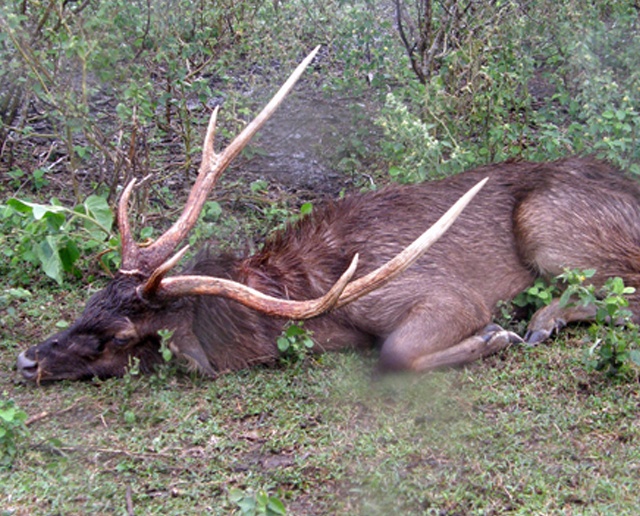


About
07 May 2012
Rusa are a rare and elusive deer species in New Zealand. There is only one recognised free-range herd in the whole country, and that in a very localised North Island region where public access is extremely limited. Luckily there are some herds living within North Island game estates and one of those herds roams at Poronui.
Poronui has five deer species within its large estate, and the most interesting fact is that each species has made a part of this huge enclosure its home range. You will see individual animals sprinkled throughout the various habitats but the serious hunter focuses his attention on the targeted species main territory.
In the case of the rusa, the herd has staked out a set of North orientated sunny faces, which include thick cover and scattered clearings. This native Asian deer species does not like the cold, and as winter draws in and the rut intensifies, the sunny gaps in the bush are where the alert hunter is likely to find his trophy. Rusa were introduced to New Zealand in 1907 from New Caledonia, and while they have become acclimatised, their susceptibility to cold means the numbers never boomed like other deer species.
The rut in New Zealand is mid-July to mid -August and hunters may also strike a rutting sambar stag at this time. Rusa are a very gregarious deer species so spot one and you know you have probably found a group. In a group they are always wary, but on their own, individuals are often curious, and I once had a lone Poronui spiker approach me to 15 metres.
Hunters familiar with hunting New Caledonia rusa deer in their native habitat will have to adapt their technique slightly when hunting in New Zealand. In New Caledonia the rut is a noisy affair because of the number of deer present, while in New Zealand the smaller number of deer means the action is often nocturnal, and far less roaring will take place. One thing remains the same in both places however. Trying to stalk an observed group of rusa is virtually impossible because of their cunning, their tendency to be part of a herd, their sharp eyesight, and the warning barks and honks they utter if disturbed. If, after disturbing them, the hunter follows them into cover he or she will be out-manoeuvred again. Rusa watch their back-trail intently and if disturbed a second time will flee well away from the area of the disturbance.
The secret both in New Caledonia and Poronui, is to find where your trophy stag is located then early morning and late afternoon stake out that area until hopefully he puts in an appearance. The slight difference is that in New Zealand it may be a particular, popular sunny clearing that you are staking out rather than a herd of deer. Hunters sneak into position early and through vigilant glassing hope to spot their quarry appear from cover as it seeks out the sun and the girls. Often the rutting stag has undergrowth adorning his antlers. The shot will be at long range, and the opportunity needs to be quickly taken as many of the clearings are small. A New Zealand rusa trophy will not come easy but put in the effort at the right time of year and the dream may become reality.
Want to ask a question about Poronui, personalise your vacation with bespoke itinerary options or find out about available dates?
Simply fill in your name and contact email address with a short message and we will get back to you.